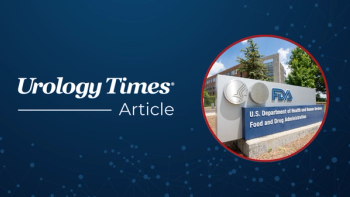
Study shows feasibility of mRCC treatment selection based on tumor gene expression
The study specifically examined this precision medicine pathway in the context of frontline treatment selection between nivolumab with or without ipilimumab and a VEGFR tyrosine kinase inhibitor.
Findings from the BIONIKK study published in The Lancet Oncology suggest that biomarker-driven treatment selection based on tumor molecular phenotype may be on the horizon in the treatment paradigm for metastatic renal cell carcinoma (RCC).1
The study (NCT02960906) specifically examined this precision medicine pathway in the context of treatment selection between nivolumab (Opdivo) with or without ipilimumab (Yervoy) and a VEGFR tyrosine kinase inhibitor (TKI) in the first-line setting for patients with metastatic clear-cell RCC (ccRCC).
Frontline treatment of ccRCC has changed tremendously since 2015, when the immune checkpoint inhibitor (ICI), nivolumab, was granted FDA approval. Since then, ICIs alone and in combinations have entered the space and offer options for patients with RCC subtypes.
Prior research showed that treatment with sunitinib (Sutent) in patients with good response to the agent had molecular and pathological features closest to normal kidney tissue (ccrcc3), investigators hypothesized that immune-high ccrcc4 tumors would respond to nivolumab-based therapy, either with or without ipilimumab (Yervoy), because of the immune-enriched tumor microenvironment. Moreover, ccrcc1 tumors would have a better response to the combination of nivolumab and ipilimumab compared with nivolumab alone because of the need to recruit antitumor cytotoxic T cells.
“To our knowledge, this is the first study to show the feasibility of prospective patient and treatment selection based on tumor gene expression in metastatic renal cell carcinoma. By allocating treatment according to tumor molecular group, we enriched the population who achieved an objective response with nivolumab, nivolumab–ipilimumab, and VEGFR tyrosine kinase inhibitors (VEGFR-TKIs),” wrote the study authors led by Yann-Alexandre Vano, a medical oncologist at the Hôpital Européen Georges-Pompidou.
To conduct the biomarker-driven, open-label, noncomparative, randomized, phase 2 BIONIKK trial (NCT02960906), patients with ccRCC from 15 university hospitals and cancer centers in France were enrolled. Those eligible for the study were patients aged 18 years or older who had newly diagnosed or recurrent stage IV RCC, an ECOG performance status of 0-2, 1 or more measurable lesion per RECIST v1.1, and had not received previous systemic therapy for metastatic disease.
In terms of molecular grouping, the presence of a sarcomatoid component and PD-L1 expression was centrally assessed by an expert uropathologist on selected formalin-fixed paraffin-embedded tumor samples for all patients. Samples were selected by certain criteria, which included tumors with ≥ 60% of viable tumor cells, ≤ 20% of necrosis, of highest grade, and with the highest immune infiltrate. Also, the presence of a sarcomatoid component was identified and PD-L1 expression was assessed using the PD-L1 22C3 antibody. Tumors with TC ≥ 1% were PD-L1 positive.
The patients with ccrcc1 and ccrcc4 disease were assigned to receive either nivolumab 3 mg/kg or nivolumab with ipilimumab 1 mg/kg. Those with ccrcc2 and ccrcc3 groups disease were assigned to receive 1 of 2 VEGFR TKIs (sunitinib 50 mg/day for 4 weeks every 6 weeks or oral pazopanib [Votrient] 800 mg daily continuously).
The primary end point of the study was the objective response rate (ORR) by investigator assessment per RECIST v1.1. Secondary end points of the study included ORR at week 22, progression-free survival (PFS), overall survival, duration of response (DOR), duration of treatment, and safety and tolerability.
Overall, there were 61 patients assigned to receive nivolumab monotherapy, 101 assigned to the combination of nivolumab and ipilimumab, and 40 received a VEGFR TKI.
Among patients with ccrcc1, those treated with nivolumab alone had an ORR of 29% (95% CI, 16%-45%) vs 39% (95% CI, 24%-55%) with nivolumab plus ipilimumab (Odds ratio [OR], 0.63; 95% CI, 0.25-1.56). Patients with ccrcc4 disease had an ORR of 44% (95%, 20%-70%) on nivolumab monotherapy vs 50% (95% CI, 26%-74%) in patients treated with nivolumab/ipilimumab (OR, 0.78; 95% CI, 0.20-3.01).
Responses were higher among patients with ccrcc2 compared with other phenotypes and lower in patients with ccrcc3 disease. Specifically, those with ccrcc2 treated with a VEGFR TKI had an ORR of (50% (95%, 33%-67%) vs 51% (95% CI, 34%-68%) with nivolumab plus ipilimumab (OR, 0.95 (0.38-2.37). Among the patients with ccrcc3, the ORR was 0 with VEGFR TKI therapy compared with 20% (95% CI, 1%-72%; OR, not evaluable [NE]).
DORs were not reached (NR) in any treatment arm, but ranged from 6.0 months to 11.8 months, depending on phenotype and the treatment administered. The shortest time to response was observed in patients with ccrcc4 disease treated with nivolumab monotherapy, with a time to response of 2.2 months (range, 2.2-NR). The longest time to response was among patients with ccrcc2 disease treated with a VEGFR TKI at 4.9 months (range, 2.8-16.5).
PFS was assessed in the ccrcc1, ccrcc2, and ccrcc4 groups. In patients with ccrcc1 disease who received the combination of nivolumab and ipilimumab, the median PFS was 7.7 months (95% CI, 5.0-12.9) compared with 5.2 months (95% CI, 2.4-9.1) among those treated with nivolumab alone (hazard ratio [HR] 1.27 (95% CI, 0.77-2.11).
The median PFS in patients with ccrcc4 treated with the ICI combination was 13.0 months (95%CI, 2.5-NE) vs 7.8 months (95% CI, 2.3-NE) with nivolumab alone (HR, 1.37 (95% CI, 0.57-3.29)
Finally, patients in the ccrcc2 group treated with nivolumab plus ipilimumab had a median PFS of 11.1 months (95% CI, 7.7-23.2) vs 14.4 months (10.6-NE) with VEGFR TKI treatment (HR, 0.75; 95% CI, 0.40-1.39).
Safety was assessed based on treatment with the nivolumab monotherapy, nivolumab plus ipilimumab, and VEGFR TKI therapy, and grade 1/2 adverse events (AEs) were observed in 76%, 54%, and 30% respectively. In the nivolumab-only group, the most common low-grade AEs were fatigue (50%), pruritus (24%), and maculopapular rash (17%). For patients treated with the ICI combination, the most common grade 1/2 AEs were fatigue (50%), pruritus (31%), and diarrhea (32%). Lastly, in the VEGFR TKI arms, the most common grade 1/2 AEs were fatigue (65%), diarrhea (53%), and oral mucositis (43%).
“Our results confirm that the response to nivolumab alone or with ipilimumab and to VEGFR-TKIs is different depending on the characteristics of the tumor and its microenvironment. The feasibility of prospectively selecting patients by their molecular group for treatment choice opens the way to larger biomarker-based trial designs,” wrote Vano et al.
Reference
1. Vano Y, Elaidi R, Bennamoun M, et al. Nivolumab, nivolumab–ipilimumab, and VEGFR-tyrosine kinase inhibitors as first-line treatment for metastatic clear-cell renal cell carcinoma (BIONIKK): A biomarker-driven, open-label, non-comparative, randomized, phase 2 trial [Published online ahead of print April 04, 2022]. Lancet Oncol. doi: 10.1016/s1470-2045(22)00128-0
Newsletter
Stay current with the latest urology news and practice-changing insights — sign up now for the essential updates every urologist needs.


















